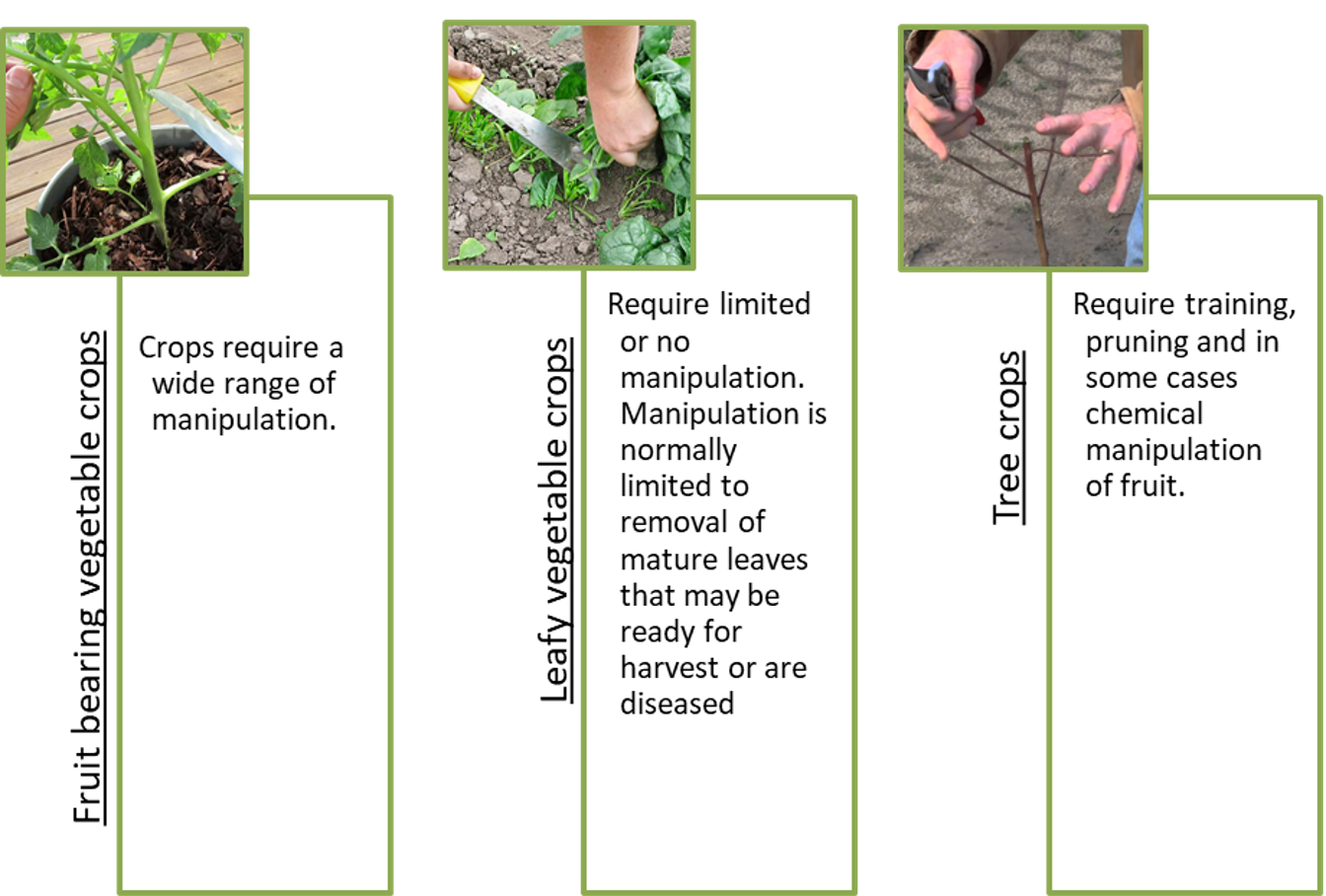Plant manipulation is the skilful management or treatment of plants to derive a specific outcome. Trees are manipulated in various deciduous crops such as apples, pears and grapes, to enhance the fruit size and quality. Do we need to manipulate, citrus and why? Plant manipulation methods contribute to producing a marketable product at an acceptable price. Plant manipulation cannot mend diseased or neglected trees, or solve cultivar selection or other problems. All other production practices should be under control, including plant nutrition, irrigation, soil related factors, fungal diseases, and protection from pests. It is also assumed that the right cultivar has been planted on the right rootstock in the right area. If any of these factors are neglected or done incorrectly, the problems that will occur as a result cannot be resolved through plant manipulation alone. The cause of the problem must be identified and rectified, and only then the correct plant manipulation technique can be selected to improve the situation. When dealing with the various manipulation techniques, keep in mind that a tree is a living organism. Circumstances change and are dependent on many internal and external factors, and plant manipulation therefore does not always have the same predictable outcomes. Knowledge of the tree and local conditions, and experience in using these techniques play a big role in being able to predict the outcome. Certain techniques, concentrations and timing also vary between cultivars, different climatic zones, and different microclimates.

Physical Manipulation of Plants
Physical manipulation encompasses the manual activities that encourage the healthy development of the tree, ensuring that a tree produces regular, acceptable sized fruit when it is wanted. The manipulation directs the plant’s energy into the process of producing a quality fruit within a time that is expected by the farmer or market.
There are several different manipulation techniques that are applied to crop plants.
Crop plants can be roughly divided into three main groups with regards to manipulation.
Chemical Manipulation of Flowers and Fruit
Several chemicals are used to control flower and fruit development in fruiting plants. Using chemicals, the energy of the plant can be directed to the purpose of producing a quality fruit of the required size at the required time.
Using chemicals, you can avoid the period of bud dormancy and stimulate the plant into early production, thus gaining the lucrative early market for a crop.
Chemicals such as Paclobutrasol could control the height of the plant, terminal buds can be ‘pinched’, cold requirements substituted, and excessive long shoots can be chemically disbudded.
Ethylene is a chemical that is naturally produced in fruits, seeds, flowers, stems, leaves and roots and controls a multitude of processes.
Ethylene is used commercially to promote flower development and colour formation and speeds up fruit ripening. Ethylene is also used in the production of pineapples to stimulate even flowering.
In deciduous fruit production, the flowers often drop prematurely before pollination has taken place resulting in a loss of potential crop. If the plant is sprayed with the chemical silver thiosulfate, which prolongs flower life and reduces floret abscission.
In apple trees where different shoots types tend to produce different plant parts. Lateral shoots tend to produce vegetative growth. If these are left unchecked the plant becomes very leafy and bears very little fruit. If laterals are pruned, they produce sprigs that carry fruit. Manual pruning of laterals is time consuming. Chemical pruning will kill terminal buds and produce side shoots that tend to become sprigs that will produce fruit.